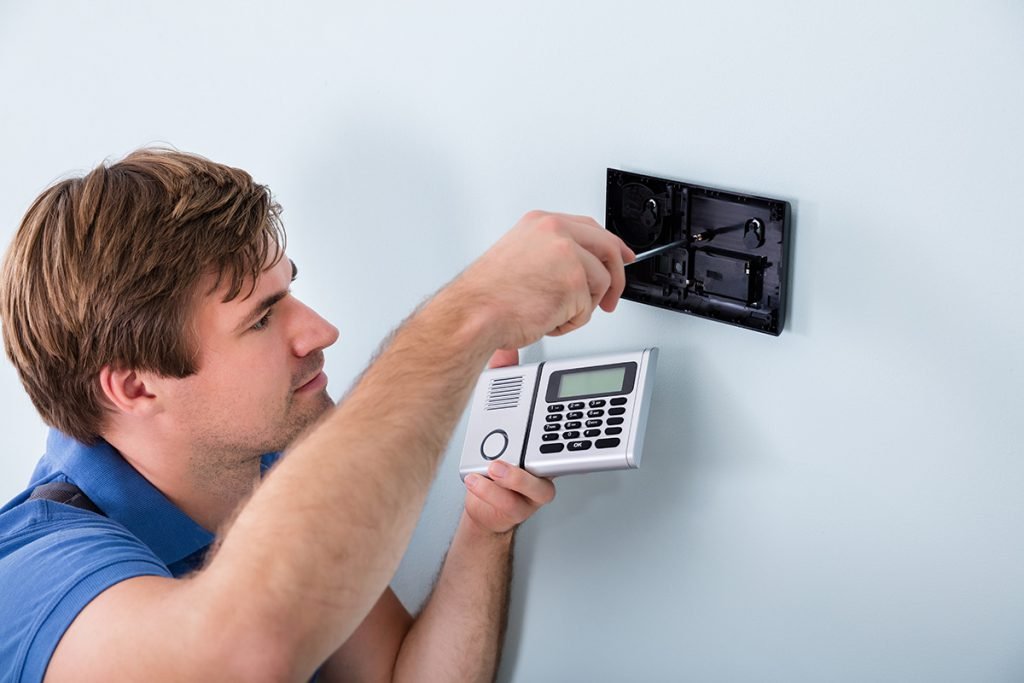Home security has evolved from bulky keypads and expensive technician installs to smart, sleek setups you can control from your phone. But with this evolution comes a crucial decision: Do you go the DIY route or invest in a professionally installed system? At RetailUndercut, we’ve worked with both types to understand what matters most—safety, convenience, reliability, and cost.
In this guide, we’ll break down the key differences between DIY and professional security systems, highlight top products in each category, and share what really matters when protecting your home and family in 2025.
DIY vs Professional Security Systems: What’s the Real Difference?
Before diving into products, let’s look at the big-picture pros and cons of each system type.
🛠️ DIY Security Systems
DIY home security kits have exploded in popularity thanks to smart-home integration and budget-friendly pricing. Most can be installed in under an hour and don’t require drilling or rewiring.
Pros:
- Lower upfront and monthly costs
- Flexible setups and expansion
- Smartphone control and remote access
- No contracts required
Cons:
- Self-monitoring means you handle alerts unless you add professional monitoring
- Setup can get tricky in large or multi-level homes
- May lack features like cellular backup or tamper alerts
🧰 Professional Security Systems
Professionally installed systems often come with 24/7 monitoring, cellular backup, and high-end hardware. They’re often used in larger homes or for users who want a set-it-and-forget-it solution.
Pros:
- 24/7 professional monitoring
- Reliable cellular + battery backup
- Integration with fire, carbon monoxide, and medical alerts
- Support from trained technicians
Cons:
- Higher monthly fees and contracts
- Limited control over customization
- Professional installation required (and sometimes costly)
Best DIY Home Security Systems of 2025
We tested the top DIY systems for ease of use, expandability, reliability, and smart-home compatibility. Here’s what stood out to The RetailUndercut Team.
SimpliSafe 10-Piece Wireless Home Security System
SimpliSafe remains a fan-favorite in 2025, thanks to its affordable monthly plans and fast setup. The 10-piece kit covers entry sensors, motion detectors, and a base station with battery and cellular backup.
Why It Works for Real Homes
SimpliSafe is ideal for renters and homeowners alike. Setup takes under 30 minutes, and the monitoring subscription is optional, making it a solid pick for self-monitored setups.
Features:
- No tools required for setup
- Optional 24/7 monitoring with police dispatch
- Cellular + battery backup
- Compatible with Alexa and Google Assistant
Pros:
- Budget-friendly without long contracts
- Expandable with smoke, water, and freeze sensors
- Great app interface
Cons:
- Camera quality is average
- No home automation integrations beyond voice assistants
Best for: Renters, small homes, and budget-conscious users
Ring Alarm 8-Piece Kit (2nd Gen)
Ring has refined its Alarm system to deliver excellent value with wide smart-home integration. It syncs effortlessly with Alexa routines and Ring doorbells or cameras.
Why We Like It
If you’re already in the Amazon ecosystem, Ring makes smart home security nearly effortless. We’ve found it’s especially useful for busy households that want real-time app notifications across devices.
Features:
- DIY setup with optional professional monitoring
- Works with Ring cameras and doorbells
- Includes contact sensors, keypad, and motion detector
- Supports cellular backup with Ring Protect Plus
Pros:
- Seamless integration with Alexa and Echo devices
- Modular and expandable system
- Affordable monthly plans
Cons:
- No native Google Assistant or HomeKit support
- Extra sensors can get pricey
Best for: Smart-home fans who already use Alexa or Ring products
Abode Smart Security Kit
Abode bridges the gap between DIY flexibility and pro-level features, offering HomeKit support, custom automation rules, and top-tier app controls.
What Stood Out to Us
Unlike many competitors, Abode plays well with all three major platforms: Alexa, Google, and Apple HomeKit. That alone makes it one of the most versatile systems we’ve tried in 2025.
Features:
- On-demand or monthly professional monitoring
- HomeKit, Alexa, and Google Assistant integration
- Geofencing and custom automations
- Indoor camera included in base kit
Pros:
- Great for Apple users
- Can be professionally monitored or self-monitored
- Advanced automation options
Cons:
- Subscription required for video storage
- Fewer third-party accessories than Ring or SimpliSafe
Best for: Tech-savvy users who want deep automation and cross-platform control
Best Professional Security Systems of 2025
While DIY has grown, there’s still a strong case for professional systems—especially for large properties or when security needs are complex.
ADT Command & Control
ADT has updated its system for the smart home era. ADT Command now integrates with Google Nest, offers touchscreen control, and provides trusted 24/7 monitoring.
What’s New in 2025
ADT now allows app control and limited smart-home features through Google Nest integration. It’s a major improvement over legacy models, and installation is included with the service.
Features:
- Touchscreen panel with emergency buttons
- Integrates with Nest cameras, thermostats, and doorbells
- Professional monitoring with police/fire/medical dispatch
- Includes cellular and battery backup
Pros:
- Reliable and responsive monitoring
- Professional-grade sensors and coverage
- Large network of service technicians
Cons:
- Requires long-term contract
- Less flexible for renters or short-term users
Best for: Large homes, long-term homeowners, or high-risk neighborhoods
Vivint Smart Home Security
Vivint blends premium smart-home automation with professional monitoring. It’s sleek, modern, and supports in-app control of lights, locks, and thermostats.
What Impressed Us
Vivint systems feel high-end. The sensors are slim, the cameras are 4K-ready, and the mobile app is incredibly polished. This one stood out to the RetailUndercut testing crew for its versatility and design-first approach.
Features:
- 24/7 monitoring with mobile access
- Z-Wave compatible for smart locks, lights, garage doors
- Professional installation included
- Touchscreen control panel with two-way talk
Pros:
- All-in-one smart home control
- High-quality hardware
- Flexible financing options
Cons:
- Higher upfront cost
- Limited DIY adjustability
Best for: Smart-home enthusiasts and design-conscious homeowners
DIY or Professional? Here’s How to Choose
Still undecided? Here’s how we break it down at The RetailUndercut Team:
| Criteria | DIY Systems | Professional Systems |
|---|---|---|
| Budget | More affordable upfront | Higher install/monitoring cost |
| Ease of Setup | Set up in under an hour | Installed by technicians |
| Monitoring | Optional/self-monitored | Always 24/7 monitored |
| Smart Integration | Strong (Ring, Abode, etc.) | Good (Vivint, ADT w/Nest) |
| Custom Automation | Abode, Ring excel here | Limited without technician |
| Homeownership | Great for renters or short-term | Best for long-term homes |
Final Thoughts
Choosing between DIY and professional home security comes down to your lifestyle, budget, and comfort with tech. At RetailUndercut, we’ve found both types can offer reliable protection—it’s just a matter of how hands-on you want to be.
If you want flexibility and lower costs, SimpliSafe and Ring are excellent starting points. If you prefer full-service peace of mind and don’t mind a contract, Vivint or ADT might be your best fit.



